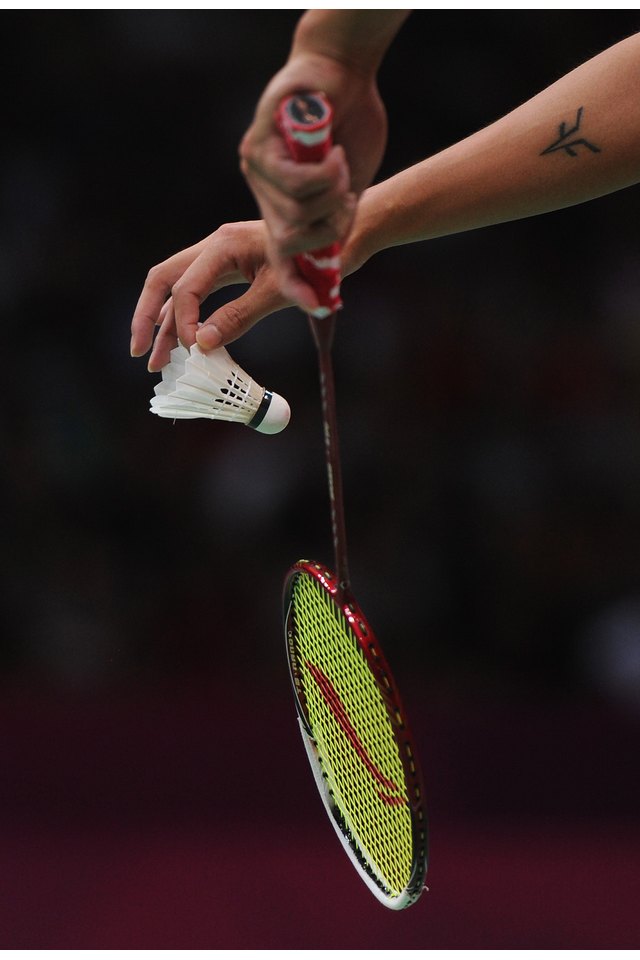Basic Rules of Badminton Including Serving Faults

Badminton players across the globe play the game according to the rules and regulations set by the Badminton World Federation. The rules are designed to keep order during match play and make the game fair for all players. Whether you are an advanced tournament player or you simply enjoy playing badminton at family picnics and gatherings, learning the basic rules, including specific serving rules, makes the game more enjoyable and keeps the flow of the game continuous.
Match Play Basics
A typical badminton match consists of the best of three games. Once the shuttle has been served correctly, players hit it back and forth over the net until one player has committed a fault, fails to return the shuttle or the shuttle hits the floor. An example of a player fault is if his racket or any part of his clothing touches the net during play. If the shuttle hits any part of the boundary line, it is considered good. Players change ends after the first game. If a third game is necessary to determine the winner, players also change ends after the second game. In the third game, players change ends when one player or side has scored 11 points. A one-minute break is allowed when one side has reached 11 points, and a two-minute break is allowed between games.
Scoring
Each game consists of 21 points. Points are awarded to whichever player or side wins the back and forth exchange, referred to as a rally. If the score becomes tied at 20 points, play continues until one side has a two-point lead. If the score becomes tied at 29 points, one more point is played and the winner of this point wins the game. The side that wins the game serves first in the next game.
Basic Serving Rules
A coin toss at the beginning of a match determines who serves first. Upon winning the toss, the player or side can choose to serve or receive first or choose which side of the court to start play. You are only allowed one serve per point in badminton. The server starts each game by serving the shuttle diagonally cross court, from right to left. If the server wins the point, he serves again, but from left to right. Whenever the server’s score is zero or an even number, the shuttle is served from right to left. Whenever the server’s score is an odd number, he servers from left to right. If the server fails to score, the receiver becomes the new server.
Serving Faults
A serve is considered a fault if at the moment of contact, the shuttle is not held at or below the server’s waist and the shaft of the racket does not point downward. Servers must use one continuous motion, no start-and-stop movements are allowed, and the initial contact must be at the base of the shuttle. Some part of both the server’s feet must be in contact with the floor until after contact is made; otherwise it is considered a fault. If the shuttle is served to the wrong part of the court or lands outside the boundary lines, it is a fault. A serve that fails to go over the net or gets caught in the net is a fault.
